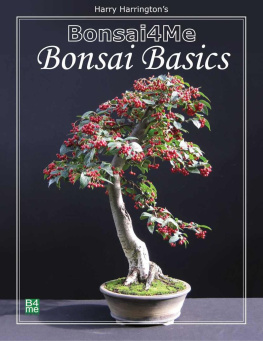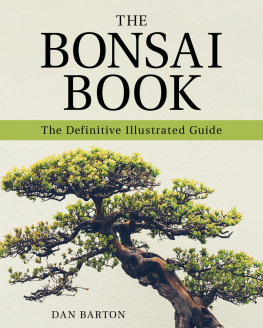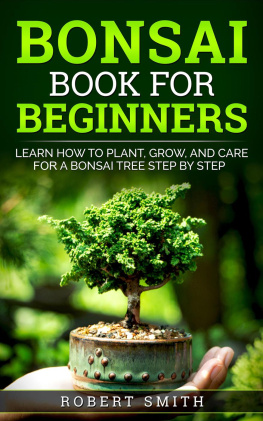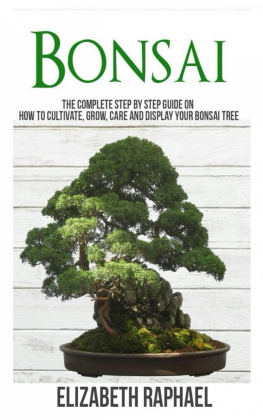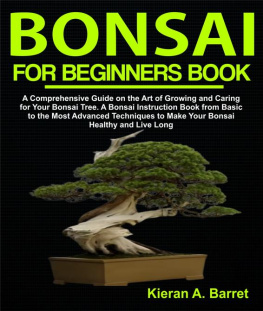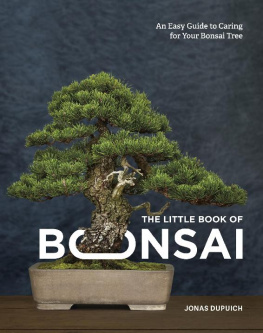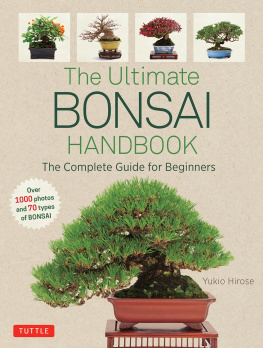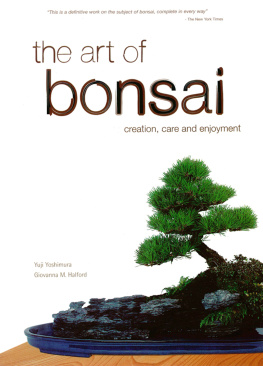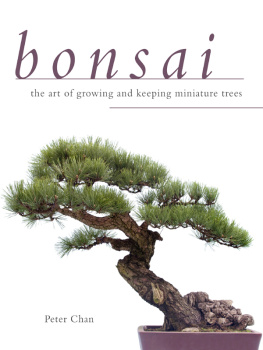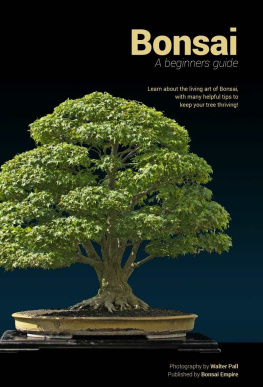Harry Harrington - Bonsai4me Bonsai Basics
Here you can read online Harry Harrington - Bonsai4me Bonsai Basics full text of the book (entire story) in english for free. Download pdf and epub, get meaning, cover and reviews about this ebook. year: 2013, publisher: B4Me Publishing, genre: Children. Description of the work, (preface) as well as reviews are available. Best literature library LitArk.com created for fans of good reading and offers a wide selection of genres:
Romance novel
Science fiction
Adventure
Detective
Science
History
Home and family
Prose
Art
Politics
Computer
Non-fiction
Religion
Business
Children
Humor
Choose a favorite category and find really read worthwhile books. Enjoy immersion in the world of imagination, feel the emotions of the characters or learn something new for yourself, make an fascinating discovery.
- Book:Bonsai4me Bonsai Basics
- Author:
- Publisher:B4Me Publishing
- Genre:
- Year:2013
- Rating:4 / 5
- Favourites:Add to favourites
- Your mark:
Bonsai4me Bonsai Basics: summary, description and annotation
We offer to read an annotation, description, summary or preface (depends on what the author of the book "Bonsai4me Bonsai Basics" wrote himself). If you haven't found the necessary information about the book — write in the comments, we will try to find it.
The Art and Practise of Bonsai conjures an aura of mystery and wonder that draws many first-time enthusiasts to it.
Until the 1990s and the onset of the Internet, bonsai enthusiasts were few and far between. Information was very scarce and only available in a handful books written by Western Bonsai Masters who had worked in isolation for many years. mirknig.com
There was a lot of trial and error on the part of both these Masters and enthusiasts.
This trial and error period didnt necessarily lead to good information...... Individuals lacking in basic knowledge and experience (relative to todays standards) wrote books and the misinformation contained was passed around as gospel. mirknig.com
It is no wonder that people who took up bonsai were often confused. It can be extremely difficult to decipher between fact and fiction when even reference books seemed to contradict each other!
With the advent of the Internet, enthusiasts were finally able to link up across the world and compare experiences, improve their overall knowledge and discovered that many pre-90 bonsai books are inaccurate and in some cases downright wrong!
Unfortunately many vendors and authorities on bonsai still hark back to the old days and continue to perpetuate myths and bad practises.
Upon finding that I work as a professional bonsai artist, many people will remark that they once had a bonsai, but it died and with some regret, they gave up. mirknig.com
It is hoped that this book, Bonsai4me: Bonsai Basics, will arm those new to bonsai with a solid foundation of knowledge that will enable them to successfully keep their bonsai alive and well, through very simple practises, and continue to enjoy, what for many that practise the Art, is a life-long passion.
Bonsai4me:Bonsai Basics takes the reader through the basics of caring for their first bonsai with honest, simple and straightforward advice from the writer of Bonsai4me, Harry Harrington.
Over 29 chapters, Bonsai Basics offers chapters on subjects such as placement, watering, indoor and outdoor bonsai, pruning, wiring, repotting and root-pruning as well as fertilizing, wiring and styling.mirknig.com
All based on a website, Bonsai4me.com, that has been widely regarded and referred to for over a decade by millions of enthusiasts around the world.
Harry Harrington: author's other books
Who wrote Bonsai4me Bonsai Basics? Find out the surname, the name of the author of the book and a list of all author's works by series.

